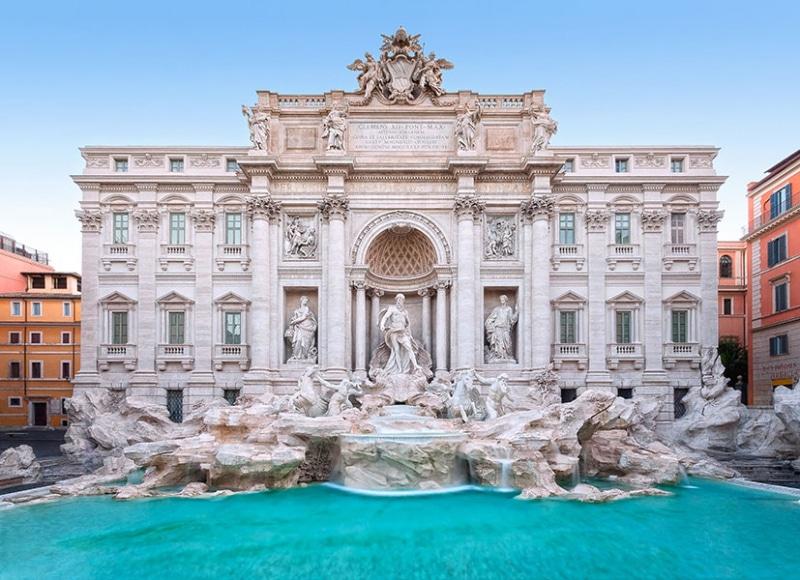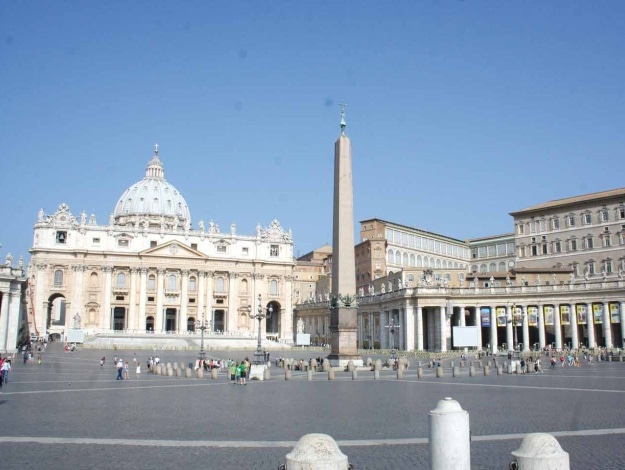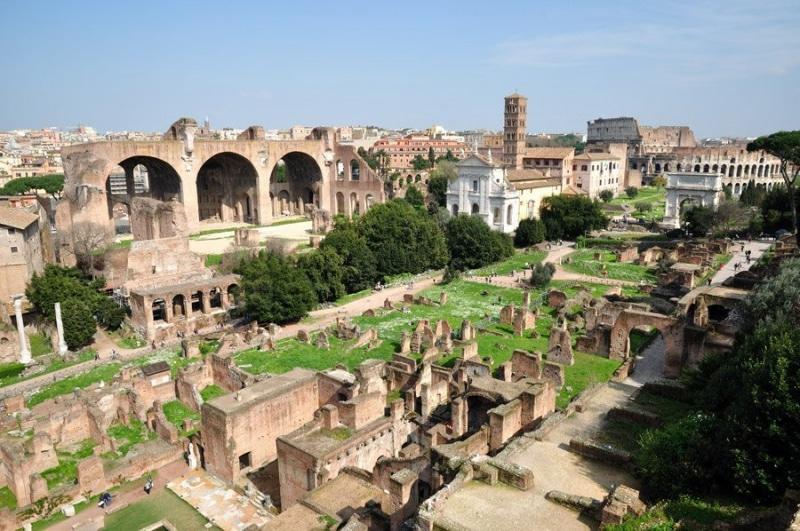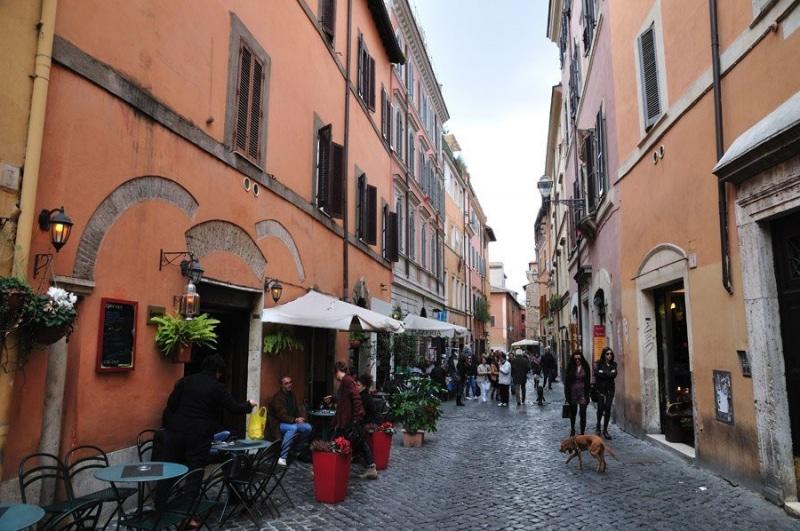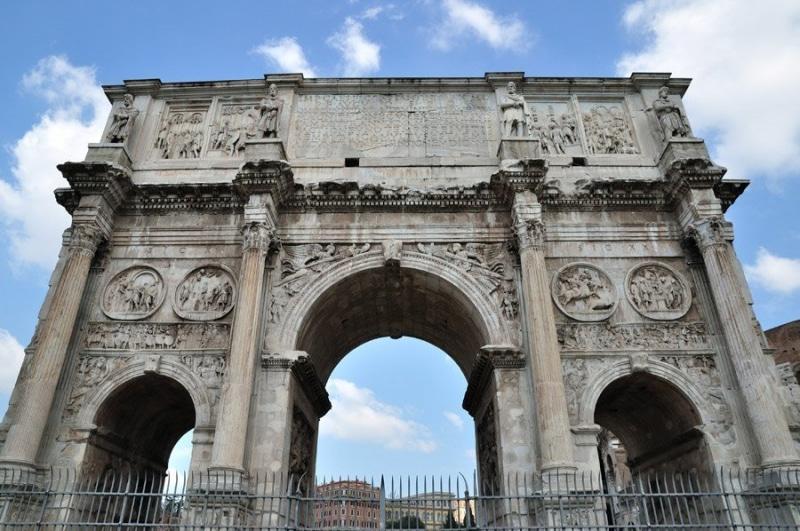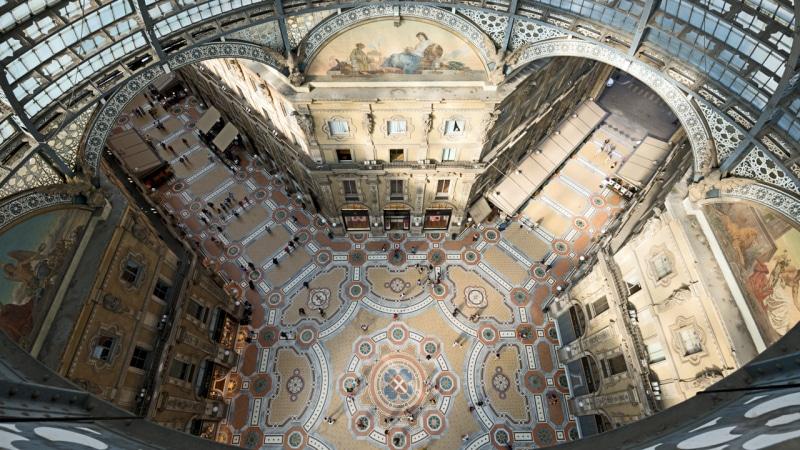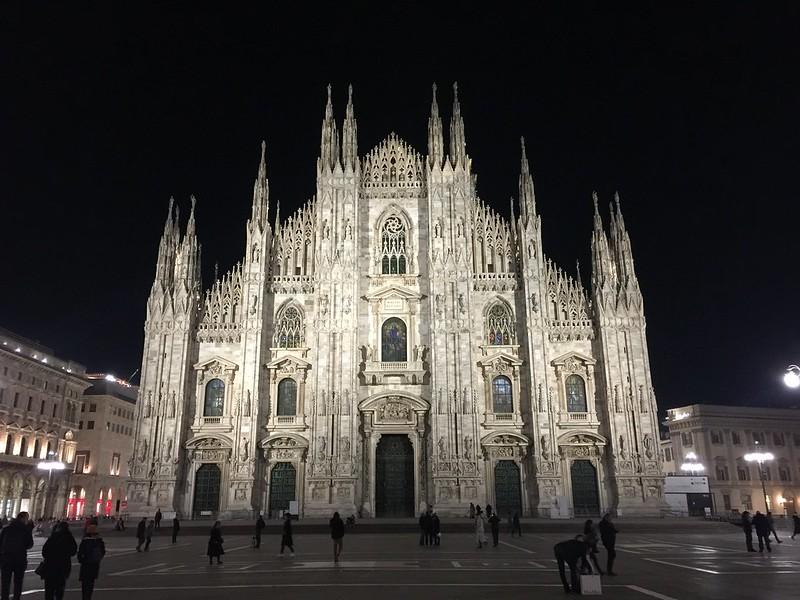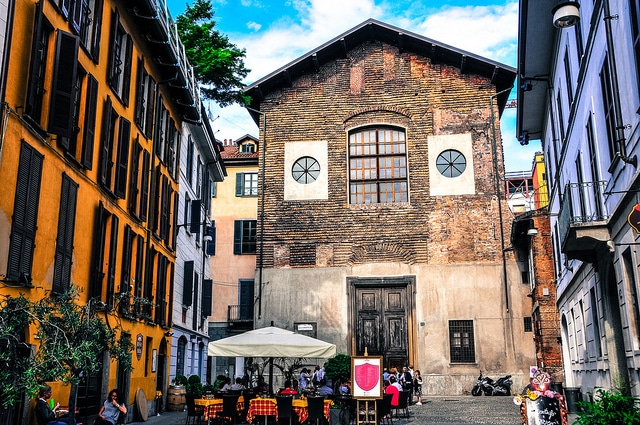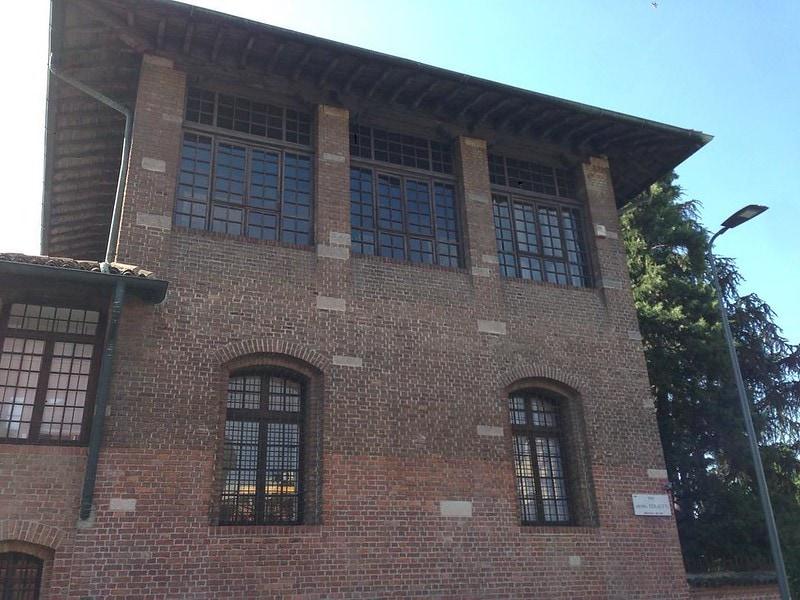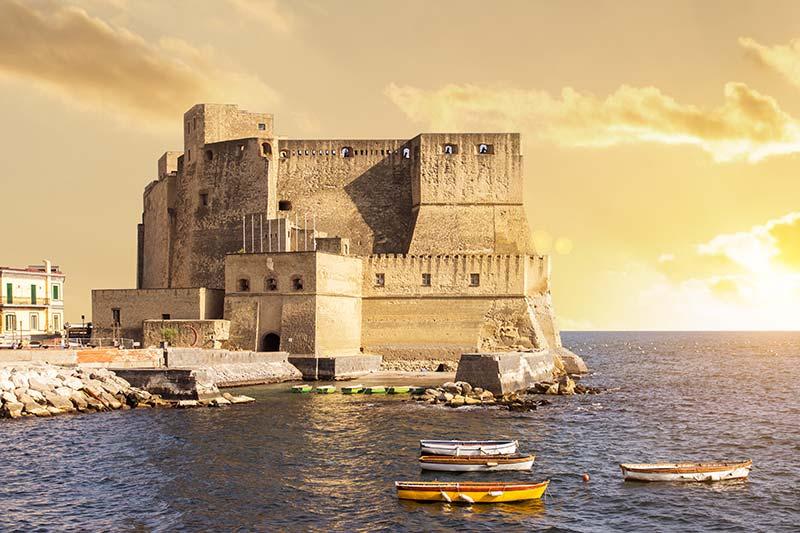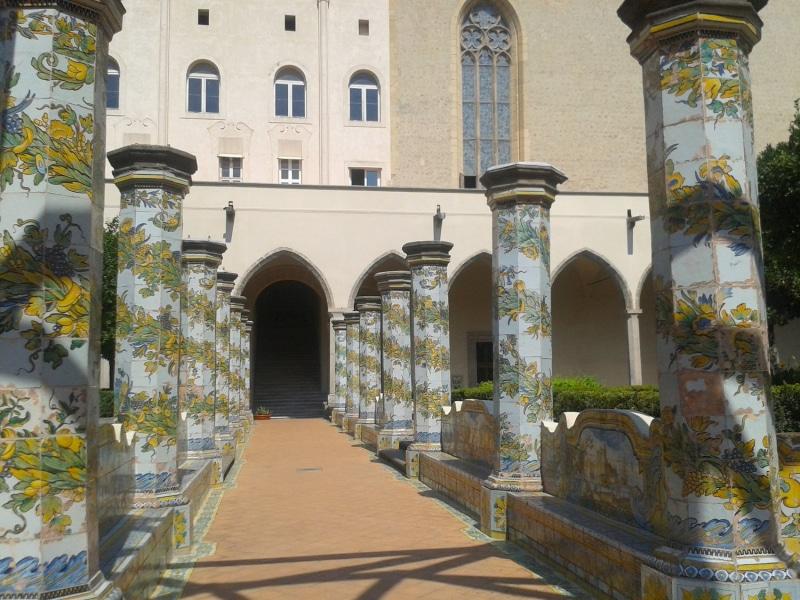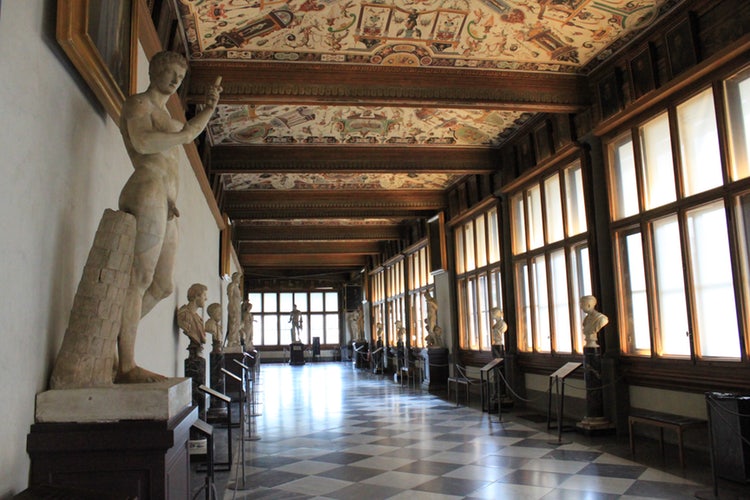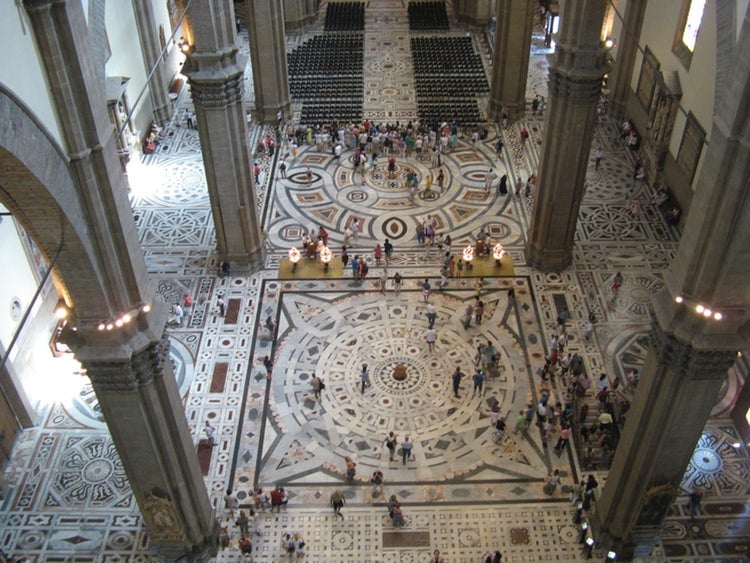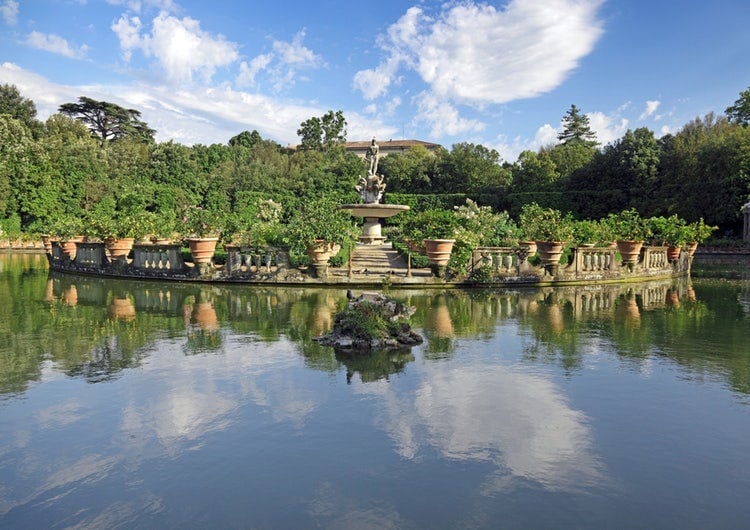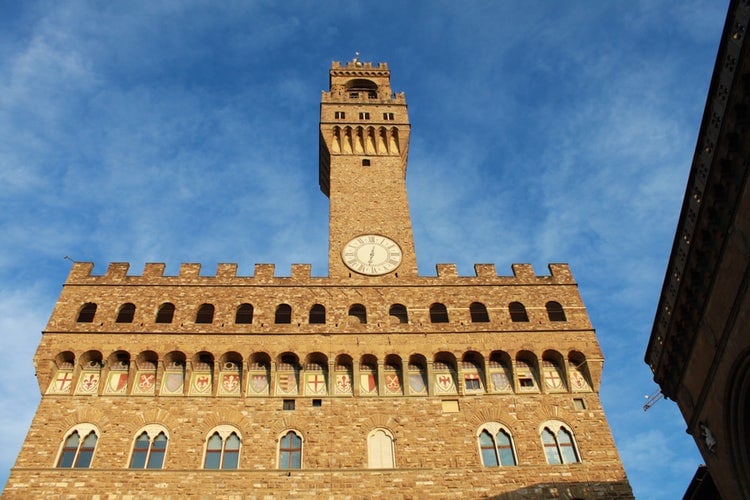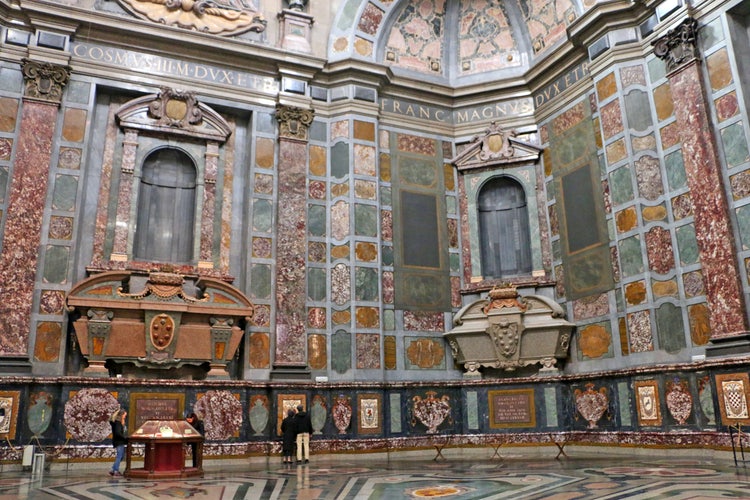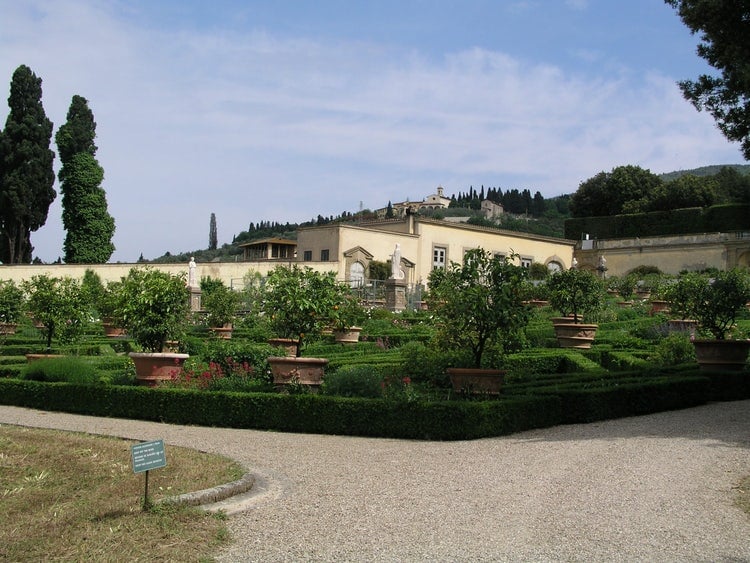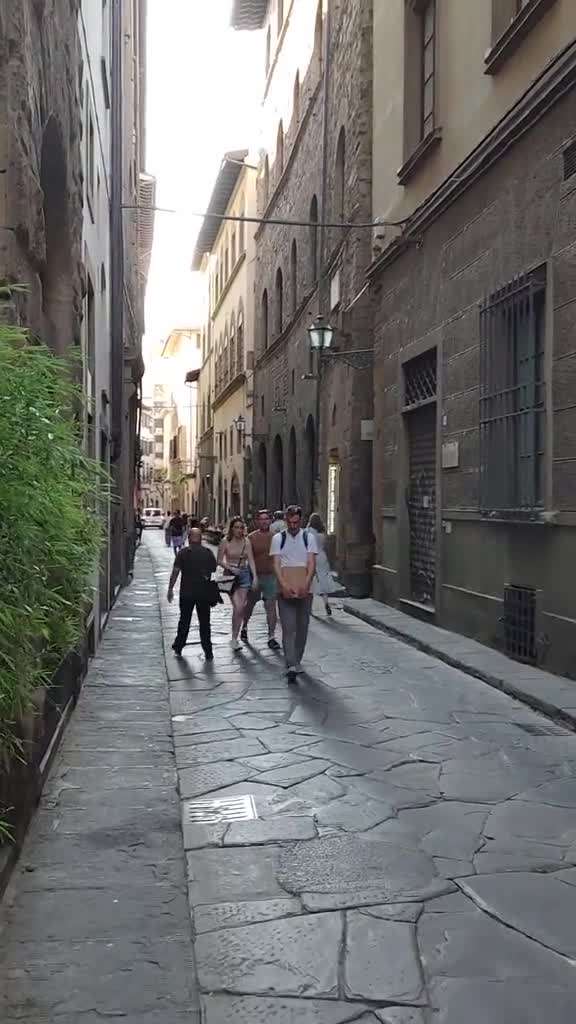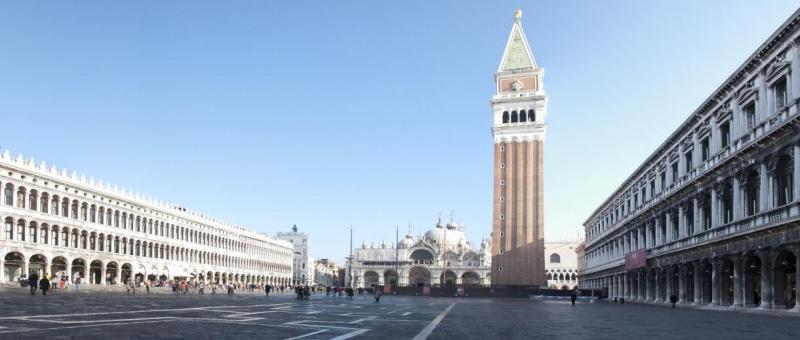Architecture, Italy
Removed from Unnamed collection
Roman Colosseum
Known as the Flavian Amphitheatre, the Roman Colosseum is one of the capital's most remarkable monuments. Every year over 6 million people visit it.
The Colosseum is the main symbol of Rome. It is an imposing construction that, with almost 2,000 years of history, will bring you back in time to discover the way of life in the Roman Empire. The construction of the Colosseum began in the year 72 under the empire of Vespasian and was finished in the year 80 during the rule of the emperor Titus. After completion, the Colosseum became the greatest Roman amphitheatre, measuring 188 meters in length, 156 meters in width and 57 meters in height.
During the Roman Empire and under the motto of "Bread and Circuses" the Roman Colosseum (known then as Flavian Amphitheatre) allowed more than 50,000 people to enjoy its finest spectacles. The exhibitions of exotic animals, executions of prisoners, recreations of battles and gladiator fights kept the Roman people entertained for years.
The Colosseum remained active for over 500 years. The last recorded games in history were celebrated in the 6th century. Since the 6th century the Colosseum has suffered lootings, earthquakes and even bombings during World War Two. Demonstrating a great survival instinct, the Colosseum was used for decades as a storehouse, church, cemetery and even a castle for nobility.
At present the Colosseum is, along with the Vatican City, Rome's greatest tourist attraction. Each year 6 million tourists visit it. On 7 July 2007 the Colosseum became one of the Seven Wonders of the Modern World. https://www.rome.net/colosseum
Map
Removed from Unnamed collection
Roman Pantheon
The Pantheon, completed in 126 AD, was a Roman temple with a surprising oculus that is the building's main source of natural light.
The Pantheon of Agrippa, also known as the Roman Pantheon, is one of the architectural masterpieces of the Italian capital. It is the best preserved building from ancient Rome.
The construction of the current Pantheon was carried out during the reign of Hadrian, in the year 126 A.D. The name of Agrippa comes from the place in which the current building is built, which was previously occupied by the Pantheon of Agrippa, built in the year 27 B.C and that was destroyed in a fire in the year 80 A.D.
At the beginning of the 7th century the building was donated to the Pope Boniface IV, who transformed it into a church, in which function it currently finds itself in a perfect state of preservation.
In the interior of the Pantheon the tombs of numerous Italian kings and a multitude of art works are found. The best-known person who can be found buried in the Pantheon is without doubt the painter and Renaissance architect Raphael. The outskirts of the Pantheon are usually full of people at all hours, either photographing the imposing building or having a traditional supper in some of the terraces of the Piazza della Rotonda while they enjoy the shows put on by different street artists. https://www.rome.net/pantheon
Map
Removed from Unnamed collection
Trevi Fountain
The Trevi fountain, inspired by Roman triumphal arches, is the largest and most famous Baroque fountain in Rome (standing 25.9 meters high and 19.8 meters wide).
In 1629, Pope Urban VIII, asked Bernini to sketch possible renovations of the fountain, finding it insufficiently theatrical. After the Pope's death the project was abandoned. Bernini's lasting contribution was to situate the fountain from the other side of the square to face the Quirinal Palace (so that the Pope could see and enjoy it).
The Trevi Fountain as we know it today, was designed by Nicola Salvi in 1732 and competed in 1762.
The central figures of the fountain are Neptun (God of the sea), flanked by two Tritons. One struggles to master a very unruly "seahorse", the other lead a far more docile animal. These symbolize the two contrasting moods of the sea.
Appropriately for a fountain resembling a stage set, the theatrical Trevi Fountain has been the star of many films shot in Rome, including romantic films such as "Three coins in a fountain" and "Roman holiday", but also "La dolce vita", Federico Fellini's satirical portrait of Rome in the 1950s. http://www.rome.info/sights/trevi-fountain/
Map
Removed from Unnamed collection
Basilica of St. Peter
St. Peter’s Basilica is one of the holiest temples for Christendom and one of the largest churches in the world. Besides, it is where the Pope presides many liturgies all year round.
The construction of the new basilica began in 1506, when the old basilica had been torn down, and was finished in 1626. It was consecrated on 18 November, 1626. Several renowned architects designed the temple, highlighting the works of Bramante, Michelangelo and Carlo Maderno.
The basilica was called St Peter’s after one of Jesus’s twelve disciples known as Saint Peter, who became one of the founders of the Catholic Church and was executed in Rome and buried where the Basilica now stands.
Visiting St Peter’s Basilica is an unforgettable experience when staying in Rome. Visitors mustn’t miss out on climbing to the top of the dome, where a stunning view of St Peter’s Square, and if the day is clear of most of the city, awaits them. https://www.rome.net/st-peters-basilica
Map
Removed from Unnamed collection
Roman Forum
The Roman Forum was where religious and public life in ancient Rome took place. The Forum is, along with the Colosseum, the greatest sign of the splendour of the Roman Empire that can be seen today.
After the fall of the Empire, the Roman Forum was forgotten and little by little it was buried under the earth. Although in the 16th century the existence and location of the Forum was already known, it was not until the 20th century that excavations were carried out.
Interestingly, the place where the Forum was built was originally a marshy area. In the 6th century B.C. the area was drained by means of the Cloaca Maxima, one of the first sewer systems in the world. https://www.rome.net/roman-forum
Map
Removed from Unnamed collection
Palatine Hill
Located 40 meters above the Roman Forum, the Palatine Hill is the most central of the seven hills of Rome and forms one of the oldest parts of the city.
The Palatine Hill is considered to be the birthplace of the Italian capital and is believed to have been inhabited since the year 1000 B.C. During the Republican Period Roman citizens belonging to the upper class settled in the Palatine Hill and built sumptuous palaces, of which important traces are still preserved. n the Palatine Hill you can see hundreds of ruins of the imposing buildings that were created for high Roman society in ancient times. Although the whole scene is impressive, these are some of the points that deserve special attention: Domus Flavia, House of Livia, House of Augustus, Farnese Gardens, Hippodrome of Domitian and Palatine museum.
The Palatine Hill is a very pleasant place for a quiet stroll under the shadow of the trees while passing many of the preserved corners of ancient Rome. https://www.rome.net/palatine-hill
Map
Removed from Unnamed collection
Trastevere
Trastevere is one of the most pleasant neighbourhoods in the city. Its peaceful and bohemian atmosphere is capable of dazzling tourists without failing to attract assiduous Roman citizens.
The life of the neighbourhood is especially concentrated around the Piazza di Santa Maria in Trastevere, where you can see the ancient Basilica of Our Lady in Trastevere. The great fountain in front of the temple serves as a meeting place, a resting spot, or simply somewhere to have an ice cream on a hot day.
A walk through the narrow cobbled streets of the Trastevere shows hidden treasures such as modest medieval churches, small shops with the most unusual objects, or even some scenes of everyday life seemingly taken from a forgotten age. https://www.rome.net/trastevere
Map
Removed from Unnamed collection
Villa Borghese
Villa Borghese of Rome is one of the largest urban parks in Europe. The State acquired the gardens from the Borghese family in 1901 and opened them to the public on 12 July 1903.
What differentiates Villa Borghese from other large parks such as Hyde Park or Central Park is the perfect combination between nature and Roman art. Villa Borghese is home to interesting architectural elements, sculptures, monuments and fountains created at different times by famous artists.
If you have enough time in Rome, travel with children or are looking for a little relaxation, the Villa Borghese is a mandatory stop in your itinerary. If you want to tour the Villa Borghese and take advantage of the time to do some exercise, it is possible to rent rollerblades, bicycles and other forms of transportation at the main gates. https://www.rome.net/villa-borghese
Map
Removed from Unnamed collection
Arch of Constantine
The Arch of Constantine was erected in the year 315 in commemoration of the victory of Constantine I the Great in the Battle of Milvian Bridge. It is located between the Colosseum and the Palatine Hill.
Constructed from pieces of previous buildings, the Arch of Constantine is the most modern of the triumphal arches that were built in ancient Rome. It is 21 meters high, 25 meters wide and is made up of three arches.
The Arch of Constantine is one of the best preserved monuments from ancient Rome. Thanks to its excellent location it is one of the most representative and photographed points of the city. https://www.rome.net/arch-constantine
Map
Removed from Unnamed collection
Trajan's Market
Situated on Via dei Fori Imperiali, Trajan's Market is an archaeological complex that currently holds the Museum of Imperial Forums (Museo dei Fori Imperiali). It is considered to be Rome’s first “shopping center”. The complex, made of red brick and concrete, had six levels in which there was once up to 150 different shops and apartments.
When you visit the Imperial Forum Museum, you can stroll through Mercati di Traiano's various levels, as well as admiring several exhibitions that show the Imperial Forums' different aspects. The exhibitions are comprised of models and videos that accompany the various remains that are left from the Imperial Forums to try to transport visitors to classical Roman times.
Although it does not enjoy as much fame as the Colosseum, Trajan's Market maintains an important part of its original appearance and offers a really interesting visit. https://www.rome.net/trajans-market
Map
Removed from Unnamed collection
Castel Sant Angelo
Known as Hadrian's Tomb, the Castel Sant'Angelo is a fortress located on the right bank of the Tiber, a short distance from the Vatican City.
Construction of the building began in the year 135 under the direction of the Emperor Hadrian, who intended to use it as mausoleum for himself and his family. It was finished in the year 139 and a short time later, it became a military building, which in the year 403 would be integrated to the Aurelian Walls.
The Castel Sant'Angelo is split into five floors which can be reached by a spiral ramp that first reaches the chamber of ashes and subsequently the cells in which a number of historical figures were incarcerated.
Advancing toward the upper part of the castle you will find different rooms that functioned as a Papal residence, decorated with perfectly preserved frescoes from the Renaissance period, besides the extensive collection of weapons.
In the upper floor there is a large terrace where you can take amazing photographs of the city from above. Advancing toward the upper part of the castle you will find different rooms that functioned as a Papal residence, decorated with perfectly preserved frescoes from the Renaissance period, besides the extensive collection of weapons. In the upper floor there is a large terrace where you can take amazing photographs of the city from above. https://www.rome.net/castel-sant-angelo
Map
Removed from Unnamed collection
Galleria Vittorio Emanuele II
The Galleria, a place of transit for busy managers or a stop for enchanted and curious tourists, expresses the various faces of the city through its many facets.
As soon as it was finished, the Galleria became immediately famous for its large size, extraordinary for the time and sign of a new era.
Taking that classic wander through the Galleria, the very heart of the city, as visitors have done for many years, still creates that wonderful sensation. Entering the Galleria, the corridor between Duomo and La Scala Theatre, its magnificent arch welcomes you and hints at the Milanese spectacle that lies within. The original idea of the designers was to create a porticoed street that would function as a showcase and offer somewhere to take a pleasant stroll, enjoy an aperitif or have dinner after the opera.
Today it can still be considered the “parlour” of the city, a place where you relax and enjoy a coffee at the bar Camparino, let yourself be enchanted by the cute hats of Borsalino and the collections of Prada and Louis Vuitton, or stop for an aperitif at Savini. http://www.turismo.milano.it/wps/portal/tur/en/arteecultura/architetturaemonumenti/monumenti/galleria_vittorio_emanuele_ii
Map
Removed from Unnamed collection
Milan Cathedral
The construction of the Duomo di Milano initiated in 1386 on the site of the ancient basilicas of Santa Tecla and Santa Maria Maggiore, which were then demolished at a later date. Dedicated to Maria Nascente, the cathedral was commissioned by Gian Galeazzo Visconti and had a dual purpose: the plan was to replace the sites of worship in the heart of Milan with an imposing edifice and it was also intended to celebrate the Visconti Signoria and its ambitious expansion policy.
It is the largest and most complex Gothic building in Italy, made of pink-veined white marble from the Candoglia quarries, in the Val d'Ossola. It is 157 metres in length and covers an area of 11,700 m2. The highest spire measures 108.5 and, in October 1774, the golden 4,16 metre-high statue of the Madonna by the sculptor Giuseppe Perego was placed on its pinnacle.
The construction works were prolonged over five centuries and, during this extensive period, local and European architects, sculptors, artists and workers all proceeded in turn to work in the Fabbrica del Duomo. The result of all their labour is a unique style of architecture, a fusion of European Gothic style and Lombard tradition. http://www.turismo.milano.it/wps/portal/tur/en/arteecultura/architetturaemonumenti/abbaziechieseebasiliche/Duomo_Milano
Map
Removed from Unnamed collection
Sforza Castle
Castello Sforzesco is a surprising monument sheltering several specialized museums and traces of the city’s past. An oasis of art and culture. It was originally a Visconti fortress and later home to the mighty Sforzas, the rulers of Milan, who transformed it into a magnificent ducal palace thought to have been decorated by several of the greatest artists of the times including Donato Bramante and Leonardo da Vinci.
Transformed into a military complex during four centuries of foreign occupation and subsequently used as the barracks of the Italian army, at the end of the 19th century the Castle was restored by architect Luca Beltrami who turned it into the headquarters of Milan’s Civic Museums.
Today the Castle sits in all of its glory in the eponymous square with its 70m-tall “Torre del Filarete” and a number of majestic circular keep-towers. https://www.wheremilan.com/sightseeing-sempione/sforza-castle/
Map
Removed from Unnamed collection
Brera
Brera is synonymous with the artistic heart of the city. In fact, as you stroll along the streets of this ancient district, you cannot help but be enchanted by its almost surreal atmosphere boasting small artisan’s workshops or quaint stores selling canvases and paints. Additionally, Brera is home to the impressive Accademia di Belle Arti, where visitors can admire Milan’s famous painting collection at the Pinacoteca (the Brera Picture Gallery), the historic Biblioteca Nazionale Braidense (Braidense National Library) , the Museo Astronomico (The Astronomical Museum), the oldest scientific research institute in the city and the Giardino Botanico (Botanical Gardens), an evocative green space located. https://www.wheremilan.com/sightseeng-brera/welcome-to-brera-district/
Map
Removed from Unnamed collection
Teatrale Alla Scala
La Scala, or Teatro alla Scala in Italian, is one of the most famous opera houses in the world. Its sober and elegant exterior never fails to surprise those that visit it for the first time.
The Archduke Ferdinand of Austria-Este commissioned the construction of a new Ducal Theatre when a fire burnt down the previous theatre in 1776. The opera house was built on the site where the former site of the Church Santa Maria alla Scala, hence the name of the Teatro alla Scala.
Like other theatres of the same period, La Scala also housed a casino during its early years. In 1943, during World War II, the theatre was badly damaged by bombing. It was reconstructed three years later. In 2002, the Opera House was closed for two years while it was renovated and opened in November 2004 with an opening performance of Europa riconosciuta by Antonio Salieri, which is the same opera that was performed when the theatre was inaugurated in 1778. Many famous operas have had their first production in La Scala, such as Othello, Nabucco by Verdi or Madame Butterfly by Giacomo Puccini.
During its early years, the composer Giuseppe Verdi did not want his work to be represented in the Teatro alla Scala because he was convinced that the orchestra modified his compositions. Nevertheless, he then established a very close relationship with the Opera House.
The Theatre Museum contains a large collection of paintings, busts, costumes and several other objects related to the world of opera and theatre. The visit includes discovering the theatre’s grand foyer, an elegant and sparsely decorated hall. Then you will be taken to the small box seats covered in red satin, where the high society enjoyed and still enjoys the various operas and ballets performed in La Scala. The enormous auditorium is made of wood and covered in red velvet, adorned with golden coloured stuccos. The stage is lit by a huge Bohemian crystal chandelier with 383 bulbs. https://www.introducingmilan.com/teatro-alla-scala
Map
Removed from Unnamed collection
Villa Mirabello
It seems that in the first half of the 15th century the Visconti stayed "in the countryside", a step away from the current Marche metro stop in Milan, in Villa Mirabello. At the time, however, the building we are talking about was called Cascina Mirabello, and it can be found in the documents of 1468 that recognized it as the property of this Pigello Portinari. The Florentine nobleman dear to Prince Sforza, general manager of the annuities of the Milanese duchy and representative of the Florentine House of the Medici in Milan, was also the promoter of the construction of the Portinari Chapel in Sant'Eustorgio.
Towards the end of the 15th century, the villa changed hands, becoming the property of the noble Landriani. Antonio Landriani, awarded by Francesco Sforza as mayor of Milan in 1456, then appointed prefect of the ducal treasury by Galeazzo Maria Sforza, later president of the Mint of Milan by the appointment of Gian Galeazzo Sforza, then became a trusted man and adviser politician of Ludovico il Moro. Ludovico himself was a guest of the Landriani in Villa Mirabello on February 4, 1500. A few years later the villa became one of the houses of the order of the Humiliati, of which Gerolamo Landriani was general. The Landriani family remained the owner of Villa Mirabello for some tens of years, enough to leave traces still visible today in the form of coats of arms that stand out on the fireplace of the main hall and on the ceilings, together with the motto "always el duty ”frescoed on the walls of the villa next to pomegranate figures and blue crosses. It seems that the villa then passed from Landriani to Marino, a rich family of Genoese origin whose member Tommaso entrusted Galeazzo Alessi with nothing less than the construction of Palazzo Marino in Piazza Della Scala.
The history of the villa, in the following years, is rather confused, but it is known that it later became the property of the Serbelloni family and that, starting from the mid-1500s, it faced a sad decline: the building was reduced exclusively to uses agricultural and over the next three centuries it became increasingly dilapidated, until Luca Beltrami, in 1891, considered it by re-evaluating it as an illustrious example of Lombard architectural art. https://www.fondazionevillamirabello.it/
Map
Removed from Unnamed collection
Capodimonte Royal Palace And Museum
In 1738 Charles of Bourbon decided to transform his hunting lodge located in the wood of “Capodimonte” in a Royal Palace – Museum in order to host the Farnese Collection received from his mother. http://www.visitnaples.eu/en/diario-di-viaggio/discover-naples/top-10-things-to-do-naples/
Map
Removed from Unnamed collection
Pompeii
Pompeii was probably founded by the Oscans around the 8th century BC. This ancient Italic people settled on the southern slopes of Mount Vesuvius along the banks of the Sarno River, which was navigable at the time. Pompeii became an important commercial center early on, catching the interest of the invading Greeks and Etruscans. The Etruscans were conquered on the waters off Cuma, and the city came under domination by the Samnites in the 5th century BC http://pompeiisites.org/en/
Map
Removed from Unnamed collection
Castel dell'Ovo
The Castel dell’Ovo is the oldest standing fortification in Naples. The castle’s name comes from a legend about the Roman poet Virgil, who had a reputation in medieval times as a great sorcerer and predictor of the future. As early as the twelfth century there were pre-norman fortifications erected on the remains of part of the villa of the Roman general Lucio Vicinio Lucullo, later transformed into a castle by Frederick II and expanded in the Angevin period, when the fortress took the name "Egg Castle" https://www.visitnaples.eu/en/attractions-and-places-in-naples/castles-in-naples/castel-dellovo
Map
Removed from Unnamed collection
Piazza del Plebiscito
This noble semicircular piazza (19th Century) is enclosed on one side by the royal palace, on the other by the neoclassical façade of the church of San Francesco di Paola, built on the model of the Pantheon in Rome and prolonged by a curving colonnade. Two equestrian statues stand in front of the church: one, by Canova, depicts Ferdinand I of Bourbon, the other is of Charles III of Bourbon. The royal palace was built at the beginning of the 17th Century by the architect Domenico Fontana and has been remodelled several times. The façade retains more or less its original appearance.
Since the late 19th Century the niches on the façade have contained eight statues of the most famous Kings of Naples. A huge staircase with twin ramps and crowned by a coffered dome leads to the apartments and the sumptuously decorated royal chapel. It was only after 1734 that royalty lived in the apartments. The richly ornamented rooms have retained their numerous work of art, tapestries, paintings, period furniture and fine porcelain. https://www.italyguides.it/en/campania/naples/piazza-del-plebiscito
Map
Removed from Unnamed collection
Santa Chiara Church and Cloister
Near the Gesú Nuovo church, there is the monumental complex of Santa Chiara, one of the most important buildings commissioned by the French Kingdom of Anjou for the Franciscan order. Built in 1340, it is a rare example of Medieval architecture in Napoli. The convent was to accommodate both monks and nuns in two separate buildings but at the same time depending on the same church. The church was then built in a simple Gothic style, with the typical Neapolitan yellow tufa. Unfortunately, the church has been reconstructed changing the original features into the Baroque style with marbles, polychrome stuccos and exorbitant decorative elements by Domenico Antonio Vaccaro between 1742 and 1769. Sadly, in 1943 the church was partially bombed during the second world war. It was decided that it would be rebuilt in its original Gothic style. It was reopened in 1953. Most of the antiques sculptures have returned to their original location, including the splendid tombs of the member of the Anjou family, like the monumental tomb of Robert of Anjou dated 1343, the tomb of Mary Valois, second wife of Robert, and his son's tomb. A small part of a fresco still remains from the medieval decoration attributed to Giotto (who stayed in Napoli between 1328 and 1333) and his workshop.
The fine cloister outside the church is richly decorated with majolica tiles and it is a pure gem of the eighteenth century, designed by Domenico Antionio Vaccaro. He left the original medieval plan of the cloister but redesigning parts of it, adding two wide paths in the middle, the fine majolica decorations on the pillars with motif of vine shoots and wisteria twisting up, flowers, lemons while the seats are decorated with scenes of the city and country life in the eighteenth century. http://www.girlfromnaples.com/santa-chiara-church-and-cloister/
Map
Removed from Unnamed collection
The Uffizi Gallery
Like a very precious treasure chest, the Uffizi Gallery will grant itself to visitors just a little bit at a time: from the initial uncertainty on where to get tickets, getting through lines to get inside and at the metal detector, then taking two flights of Renaissance-era stairs before you arrive at the actual entrance to the museum. https://www.visitflorence.com/florence-museums/uffizi-gallery.html
Map
Removed from Unnamed collection
Florence Cathedral
Florence's cathedral stands tall over the city with its magnificent Renaissance dome designed by Filippo Brunelleschi, with the baptistery right across. The cathedral named in honor of Santa Maria del Fiore is a vast Gothic structure built on the site of the 7th century church of Santa Reparata, the remains of which can be seen in the crypt.
The exterior is covered in a decorative mix of pink, white and green marble. The interior, by contrast, is pretty stark and plain but quite enjoyable on warm summer days since the temperature inside tends to be cooler.
Please note the clock above the entrance on the inside of the church. It was designed in 1443 by Paolo Uccello in accordance with the ora italica, where the 24th hour of the day ended at sunset... and it still works! https://www.visitflorence.com/florence-churches/duomo.html
Map
Removed from Unnamed collection
Palazzo Pitti and the Boboli Gardens
This enormous palace is one of Florence's largest architectural monuments. The original palazzo was built for the Pitti family in 1457, designed by Filippo Brunelleschi and built by his pupil Luca Fancelli. The original construction consisted of only the middle cube of the present building. In 1549, the property was sold to the Medicis and became the primary residence of the grand ducal family. The palace was then enlarged and altered; from 1560, Bartolomeo Ammannati designed and added the grandiose courtyard and two lateral wings.
Today, the Pitti Palace houses some of the most important museums in Florence: on the first floor is the Palatine Gallery, containing a broad collection 16th and 17th century paintings (including works by Raphael), and the Royal Apartments, containing furnishings from a remodeling done in the 19th century.
On the ground floor and mezzanine is the Treasury of the Grand Dukes (formerly known as the the Silver Museum or Museo degli Argenti) displaying a vast collection of Medici household treasures, from table silverware to precious stone vases, rock crystals and precious jewelry.
The Gallery of Modern Art is on the top floor, holding a collection of mostly Tuscan 19th and 20th century paintings. https://www.visitflorence.com/florence-museums/pitti-palace.html
Map
Removed from Unnamed collection
Piazza della Signoria
The Piazza della Signoria has been the center of political life in Florence since the 14th century with the prominent Palazzo Vecchio overlooking the square. It was the scene of great triumphs, such as the return of the Medici in 1530 as well as the Bonfire of the Vanities instigated by Savonarola, who was then himself burned at the stake here in 1498 after he was denounced by the Inquisition as a heretic. A marble circle inscription on the piazza shows the location where he was burned.
The sculptures in Piazza della Signoria bristle with political connotations, many of which are fiercely contradictory. The David (the original is in the Galleria dell'Accademia) by Michelangelo was placed outside the Palazzo Vecchio as a symbol of the Republic's defiance of the tyrannical Medici. https://www.visitflorence.com/florence-monuments/piazza-della-signoria.html
Map
Removed from Unnamed collection
Ponte Vecchio
Open all of the time, along the pedestrian zone south of Piazza della Repubblica towards Palazzo Pitti
Built very close to the Roman crossing, the Ponte Vecchio, or Old Bridge, was the only bridge across the Arno in Florence until 1218. The current bridge was rebuilt after a flood in 1345. During World War II it was the only bridge across the Arno that the fleeing Germans did not destroy. Instead they blocked access by demolishing the medieval buildings on each side. On November 4, 1966, the bridge miraculously withstood the tremendous weight of water and silt when the Arno once again burst its banks.
It is also possible to admire the bridge from underneath in theater presentations, the occasional concert and boat rides. After the disaster in 2016, there is talk of turning the work road constructed during the rebuilding of the river walls int a park area, where it will be possible to stroll the river banks and get a close-up view of the bridge. https://www.visitflorence.com/florence-monuments/ponte-vecchio.html
Map
Removed from Unnamed collection
The Palazzo Vecchio Museum & Tower
Palazzo Vecchio offers Roman ruins, a Medieval fortress and amazing Renaissance chambers and paintings. A microcosm where art and history have been indissolubly bound for centuries.
Palazzo Vecchio is the main symbol of civil power for the city of Florence, whose original project is attributed to Arnolfo di Cambio. Construction on the solid fortress began in 1299 above the ruins of the destroyed Uberti Ghibelline towers, testimony of the final victory of the Guelph faction.
The entire construction also rests on top of the ancient theater of the Roman colony of Florentia (dating back to the first century A.D.), whose ruins can be admired in the underground level. This area can be visited with a separate ticket or a combination ticket which includes the Palazzo Vecchio Museum and the Archaeological site. The area is suggestive organized with information and an interesting film to help you understand exactly what you are looking at underground. https://www.visitflorence.com/florence-monuments/palazzo-vecchio.html
Map
Removed from Unnamed collection
The Medici Chapels
The Medici Chapels form part of the monumental complex of San Lorenzo. The church of San Lorenzo was the official church of the Medici from their period as private residents in their palace in Via Larga (now via Cavour), becoming their mausoleum up to the time of the extinction of the line. https://www.visitflorence.com/florence-churches/medici-chapels.html
Map
Removed from Unnamed collection
Medici Villa at Castello
The Villa Medicea at Castello just a few kilometers from Florence's historical center is an ancient complex which boasts an elegant villa and a splendid Italian garden, second only to the Boboli Gardens in Florence.
The villa reached the height of its splendor with Cosimo I dei Medici, Florence's new Duke, who turned it into a magnificent residence to celebrate the greatness of the Medici family. He ordered Giorgio Vasari to restore the villa and Niccolò Tribolo to project the Italian garden.
The villa presents a simple and geometric design with two floors and Renaissance windows. It was built around a courtyard of the 16th century with Tuscan lodges and pillars. Within the building, we find only one original fresco left from this time: the Annunciation by Raffaellino del Garbo. On the first floor, there is a large hall with frescos representing landscapes painted in the 1800th century, the Sala degli Armadi, the Sala delle Pale and a chapel.
The Villa is not accessible to the public since it has been the home of the prestigious Crusca Academy since 1583, a school dedicated to the study of the Italian language. You can, however, visit the splendid gardens without paying! https://www.visitflorence.com/what-to-see-in-florence/villa-medici-castello.html
Map
Removed from Unnamed collection
Квартира на Piazza Santa Trinita
5 August 2022
Центр Флоренции, интересная квартира рядом с площадью Santa Trinita
Map
Removed from Unnamed collection
Saint Mark's Square
Saint Mark’s Square is surely a place that can’t be missed, an exhibition of rare and unique beauty appear on a 360° view in front of the visitors, the Saint Mark’s Church, the bell tower, the “procuratie” and the Napoleonic wing, the clock tower and the two blacks.
The Church, a Romanic Byzantine style was born initially as a mausoleum of the Patron Saint, it has 5 domes, marbles and mosaics to embellish the façade, inside, decorations and wall of golden leaf mosaics represents tales of the Patron Saint.
The bell tower is the highest point of the city, 98.6 meters tall, from the top there is a unique and breathtaking view of the isle, it was originally built as a watchtower and a lighthouse in the IX century.
Finally the clock tower, also a renaissance style palace, its arcade allow to enter into the square from the “Mercerie” so called because during the Republic there where many shops selling precious merchandise coming from distant ports. Today the Mercerie are site for various commercial activities, mostly murano glass shops and most modern cloth and gift shops. http://venice-tourism.com/en/places/san-marco-district/saint-mark%E2%80%99-s-square-360%C2%B0-view
Map




